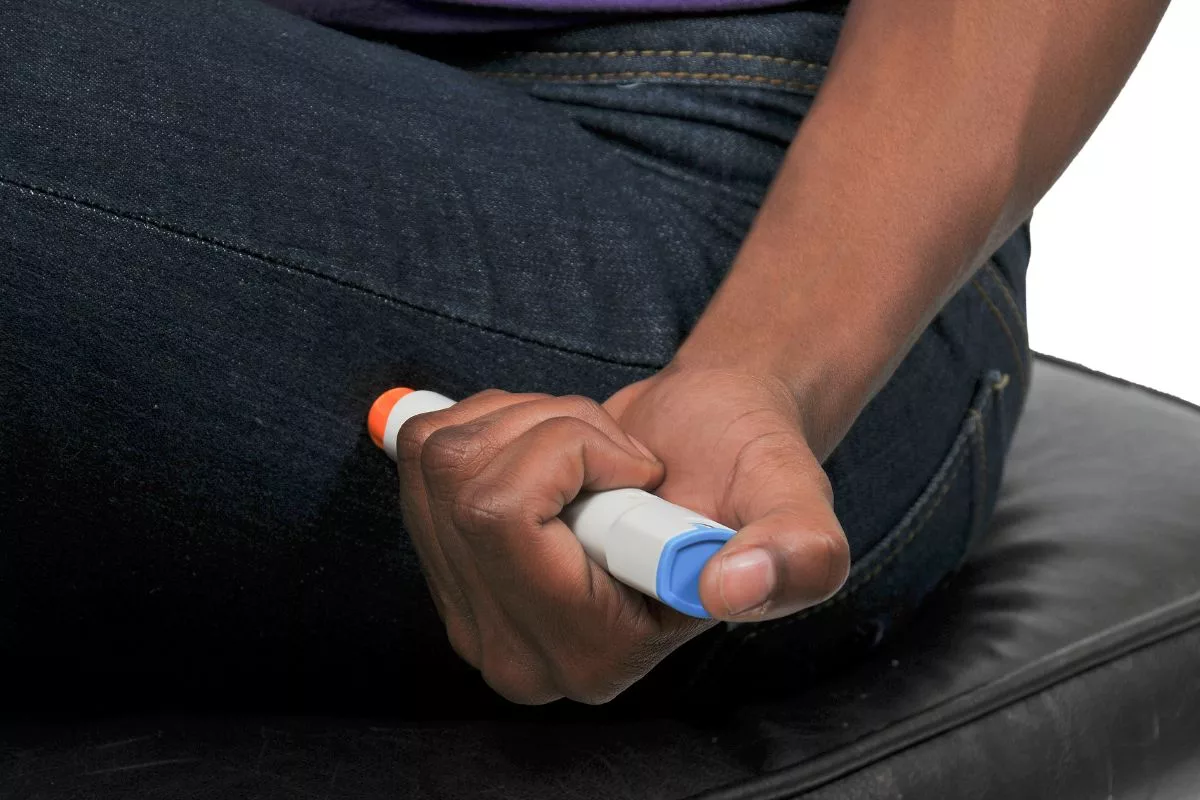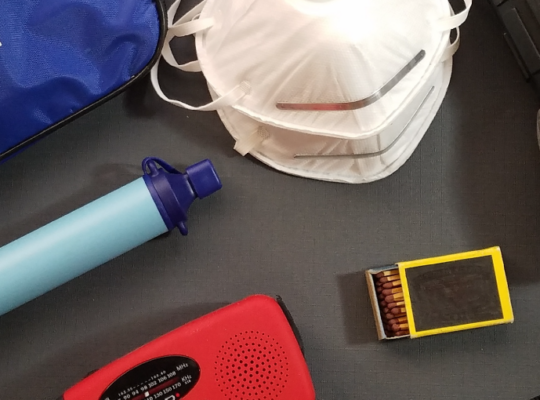Using an EpiPen on someone can be a life-or-death situation, so it’s essential that you know who is allowed to use one if you or someone you know is having an allergic reaction.
This article will help you understand what an EpiPen is and who should use it when needed.
By the end of this article, you will know how to tell when someone is having a serious allergic reaction and how to use an EpiPen if you need to.
What Is An EpiPen?
An EpiPen is an auto-injectable device that delivers epinephrine to someone with a severe allergic reaction.
If someone is experiencing anaphylaxis, they will need an EpiPen to stop the body from progressing further into anaphylactic shock.
Who Can Use An EpiPen In An Emergency?
Anyone can use an EpiPen in an emergency, but we recommend you call 911 first.
While on the line, ask if the patient reacting has an EpiPen and if they need help administering their injection.
There used to be a lot more confusion about administering EpiPens in the past, as some laws dictated that only an appropriate practitioner who was trained could use them.
However, some regulations dictate that this law doesn’t apply in emergencies. In an emergency, anyone can use an EpiPen on someone struggling with anaphylaxis.
When Should You Use An Epipen?
If you have first-aid training, you will know the signs of anaphylaxis.
Not all allergic reactions will require an EpiPen, and it’s important to identify when someone has a severe allergic reaction to use an EpiPen.
You should always check first to see if someone has an EpiPen available and if they need help administering it first.
Your patient may be able to administer it themselves. It is better to ask for consent if they are still conscious enough.
However, if they are having a severe reaction, it is best to consult 911 and explain that you know that they are having a severe reaction.
There must always be a trained staff member who is aware of how to notice anaphylaxis.
If you’re unaware, we will detail how you can tell and how to administer an EpiPen if needed.
How To Know Someone Is Having An Allergic Reaction
Anaphylaxis can occur suddenly and quickly, and a quick reaction is vital. If you suspect someone is reacting, call 911, and don’t hesitate to use an EpiPen.
There are several symptoms of anaphylaxis that you should look out for.
If you already know your patient has a known allergy, then you should look out for these signs:
- Breathing difficulty
- Throat, face, or lips swelling
- Hoarseness or wheezing
- Dizziness or light-headedness
- Rapid heart rate
- Pale or clammy skin
- Low blood pressure
- Feeling of doom
- Fainting
- Itching hives
- Abdominal pain
- Nausea
- Diarrhea
The last few symptoms are rare, but you should still watch for them, which could indicate they’re developing anaphylactic shock.
How To Use An EpiPen
How you use an EpiPen will depend on who you administer it to. However, the good news is that it is a simple procedure.
Using An EpiPen On A Child
Suppose you’re administering your EpiPen to a child. In that case, they will have an EpiPen Jr.
You need to flip open the green cap after removing it from its carrier and slide the device out.
Hold it in your fist and point the orange tip downward. You should think of keeping blue to the sky and orange to the thigh.
Then, remove the blue safety release by pulling it up with your opposite hand without bending or twisting it.
All you need to do is hold the child’s leg firmly to ensure they receive the whole dose and so they don’t injure themselves.
Put the orange tip on the middle of their outer thigh, and hold it at a right angle.
Then, swing the pen back by six inches and push it against their thigh firmly, holding it in place for three seconds.
Once you do this, remove the EpiPen Jr and ensure the orange tip covers the needle. If it doesn’t, you shouldn’t reuse the device.
Then, rub the area you injected the child for roughly ten seconds.
Using An EpiPen On An Adult
There are some small differences when you use an EpiPen on an adult or a child. However, the process is roughly the same.
You need to remove the EpiPen from the clear carrier, and you will see it has a yellow cap. Flip this cap open, and slide the device out of the tube.
Like with a child, hold it in your fist with the orange tip pointing at the thigh and the blue to the sky.
You should remove the blue safety release with your opposite hand, and pull it up without twisting or bending it.
Place the orange tip on the middle of the outer thigh, and hold it at a right angle. Swing the pen back six inches, firmly pushing it against the thigh.
When you do this, it should click. Hold it to the thigh for three seconds, and then remove it.
When you remove it, the orange tip should cover the needle, and you shouldn’t reuse it if it doesn’t.
You should then rub and massage where the injection was for roughly ten seconds.
As you can see, there are few differences between an adult’s and a child’s use of an EpiPen, except for the type of EpiPen they use.
What To Do After You Administer An EpiPen?
Once you have administered the EpiPen, you should make the person comfortable. It’s best to loosen any tight-fitting clothes to ensure they have plenty of breathing space.
Then, lie them on their back if they’re able to. We recommend turning them to their side if they’re unconscious or struggling to breathe, pregnant, or nauseous.
Suppose you can try to remove any triggers for their allergy and cover them with a blanket.
It’s best not to give your patient food or drink and assess whether you need to use the EpiPen again.
If their symptoms haven’t improved within five to fifteen minutes, try using the EpiPen again. However, you should only attempt to give your patient two injections.
Only a medical professional can use an EpiPen on them more than twice.
Should your patient not be breathing, it’s best to administer CPR.
Even if they are doing well, we recommend staying with them and reassuring them until a medical professional arrives.
Final Thoughts
Sometimes, you can’t avoid allergy triggers. If this happens, it’s best to recognize when someone is having an allergic reaction.
Anyone can use an EpiPen when it is a life-threatening situation. However, you should always remember to call 911 and follow any instructions they may have.
Frequently Asked Questions
Epinephrine will begin to work after you inject it. However, it can take five to ten minutes to fully work. It will wear off within twenty and thirty minutes, so you should contact 911 immediately.
Symptoms of an accidental injection aren’t severe, but they are uncomfortable. You might struggle with numbness, tingling, pain, or an elevated heart rate.





